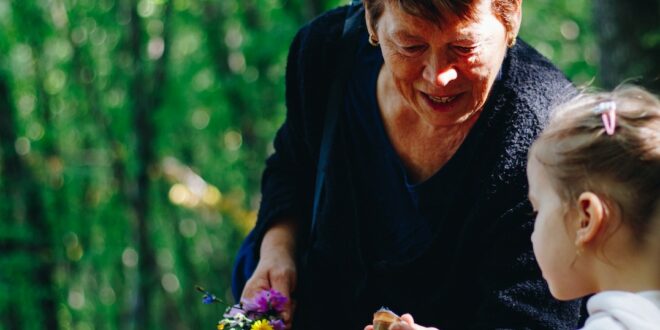In the precious time our nieces, nephews and grandchildren spend with us, what can we do to make their stay enjoyable? Not surprisingly, being a supportive relative or friend to a young person follows the same principles as sound parenting. Children settle comfortably with us when they feel safe – socially, emotionally and physically – and have meaningful connections within our social environments. The two critical senses of safety and meaning impact children’s growing narratives of who they are and how they fit into the world around them.
Generally, when children know us well, they readily discern our patterns of activity and easily follow our regular routines. However, it is not uncommon for children to be overwhelmed at the start of a visit, especially if they arrive feeling vulnerable. Fortunately, we can strengthen children’s senses of safety and meaning by attending to four dimensions of children’s emotional wellbeing:
- Alliance
- Positive Experience
- Consistency
- Optimal Disequilibrium.
1. Alliance: Relationship
Secure relationships are critical to children’s senses of safety and belonging as they offer protection in unfamiliar environments. The dimension of Alliance includes many types of meaningful social connections, including attachments with caregivers, friendships and relationships with wider family and friends.
Mutual, caring relationships grow in the context of shared activity abound with positive experiences, consistency and opportunity for success. These relationships are strengthened when we show we enjoy children being with us, demonstrate our love for them is not conditional on appropriate actions at every turn, and communicate caring and respect through our verbal and non-verbal messages. Children feel valued when we involve them in games, quiet activities or even household chores, as long as the tasks are age-appropriate and the children know what to do.
Social relationships develop in parallel with children’s growing sense of safety. When interactions with children are positive and meaningful, they sense greater levels of trust and agency. We can take advantage of children’s social and biological predispositions to connect with others by attending to the three dimensions that follow: positive shared experience, consistency within and across environments and enjoying a good balance of familiarity and novelty.
2. Positive experience
Healthy emotional well-being calls for repeated, positive experience. This means working to ensure children’s time with us elicits dominantly positive emotions and includes multiple opportunities to engage in pleasurable activity. Clearly there will be times when children express negative emotions as these are a natural and necessary part of life. There are often times when things don’t go to plan and minor upsets ensue. For example, children may fall over or have differences of opinion about games with their cousins. What matters for children’s emotional well-being is how we respond. At times, children need individualised help to become calm enough to think clearly and, then, the initiation of activity that triggers positive emotions.
It takes less effort to perceive what is going wrong in situations than what is going well. This is because our brains readily default to the perception of negative occurrences in an effort to protect us. However, we offer the greatest support for young people when we help them focus on positive events, bringing those that are appropriate and desirable to the fore. Positive reframing of events may require deliberate effort but the pay-off is massive. Any situation can be viewed through both a positive and negative lens. Picking up on what is done well, those ‘sparking moments’, serves as a powerful booster for children’s well-being, learning and behavior. Conversely, if we focus on the times children do not meet the mark, we head into a spiral downwards.
Connecting with children is easier when we know what activities they do and don’t enjoy. Playing alongside children lets them know we value them – it communicates that they matter. This does not mean we always have to put on a show and entertain the children for their entire visit. There will be times, perhaps for practical reasons, when children need to engage in less stimulating activity. However, if they feel safe, cared for and connected, they are more likely to accept quieter activities.
3. Consistency
Children seek consistency and the predictability it brings. This underscores the value of helping children become familiar with new patterns of activity and social interaction. As noted earlier, children watch the way their parents interact with us, how we talk with one another and the gestures we make. These observations serve as a way of identifying the commonalities and differences among their various social settings. Our actions are more predictable if children see a good overlap between what is done in children’s own homes and what happens in ours. Therefore, consistency is easiest to facilitate when we have prior knowledge of children’s regular routines, expectations and referents. A favourite toy or game from home can help to bridge the environments.
A pro-active approach in which expectations are caringly communicated at the outset is more effective for helping children anticipate what will happen next than simply reacting to whatever comes up. When we repeatedly react, it is more likely our responses to children’s inadvertent mistakes will be interpreted as annoyance. In such situations, what children learn to predict is we will be irritated by their actions!
When taking a positive, pro-active approach, we emphasize what we do want. For example, we let children know how to ask for things they need, even demonstrating what they might say to us. At the same time, we can tell them what they can do in our house. For young children, this may be letting them know what they can touch, where they can go and how to let us know if they need something. Positive, pro-active methods are more effective than those that draw attention to what is out of bounds. When we say ‘don’t’ do something, we impel children to focus on unsuitable actions rather than positive alternatives. They can get locked into unacceptable actions, even if they want to get it right. Of course, there will be circumstances for which we need to forewarn and react due to potential danger, such as approaching the road, stairs and water.
It is not unusual for children to experience some discomfort when separating from family members at drop-off. This is particularly the case when children are very young and are yet to understand how things that ‘go’ come back. Similarly, separating can be difficult when children are tired, unwell or hungry. Many children want to know when their parents are coming to collect them and this is generally easy to explain. Although keeping to pre-determined pick-up times helps to build trust, sometimes plans change for good or unavoidable reasons. The best support in such situations is to provide clear information about the anticipated pick-up. For example, we may say they will be collected after the meeting is over, in two hours, or after we come back from the shops.
Creating bright, breezy climates around drop-off and pick-up sends messages of safety. As these exchanges become routine, children learn to trust their stay will be safe, enjoyable and temporary. They will more easily make sense of unavoidable delays. Naturally, when children visit us regularly and have positive social interactions, they are likely to become familiar with and habituate to our routines. They will feel safe, predicting their responses will be met with love, care and attention.
4. Optimal Disequilibrium
While consistency is a critical factor in children’s emotional well-being, they also need a measure of novelty to feel excitement and open their minds to learning. Anticipation of something out of the ordinary sparks the thrill of visiting other people and places. Exciting activities are engaging, provided we make sure children are not bewildered by the skill required. They engage when there is ‘optimal disequilibrium’, the space between where children are lightly challenged but not so much as to be overwhelmed.
Making sure we keep children within this stimulating, but safe, learning zone is not always straightforward. For starters, it means we need to be attuned to their level of skill in activities and know what absorbs the interest of each child. As children’s levels of skill and knowledge keep shifting, we need to constantly adjust activities and support to maintain their interest. As children progress on activities, we can gradually reduce the level of ‘scaffolding’. Having a few age-appropriate activities available helps us keep within zones of optimal disequilibrium. These resources do not need to be expensive or the latest thing out.
Optimal disequilibrium is not constant, but widens and narrows in response to stressors at the time. Children are more willing to put their minds to new things when they are secure with the basic information they need to know about ‘how to be’ and where things are (e.g. the bathroom) in our homes. It is easy for us to take these things for granted. As much of our knowledge about “the way we do things around our place” is held in implicit rather than conscious memory, we may have to make deliberate effort to clearly articulate our expectations to children. What we want to avoid, is trying to teach children what ‘not’ to do by drawing attention to the ‘error of their actions’. Reactive, negative responses do little to help children learn appropriate actions and they make them less enthusiastic about visiting us again. Our aim is to prepare children up front, catch their positive actions and help them appreciate we enjoy our time with them.
Conclusion
Optimising the well-being of children who visit our homes means helping them to feel safe within meaningful environments. This means turning our minds to the positive actions children choose and building on the ‘sparkling moments’ that occur during our time with them. Children are likely to settle with us when they trust we are at their side, when they experience a dominance of positive emotions, when they are comfortable with our routines and patterns of interaction and when they experience the excitement of a balance of familiarity and novelty.










Join the Discussion
Type out your comment here:
You must be logged in to post a comment.